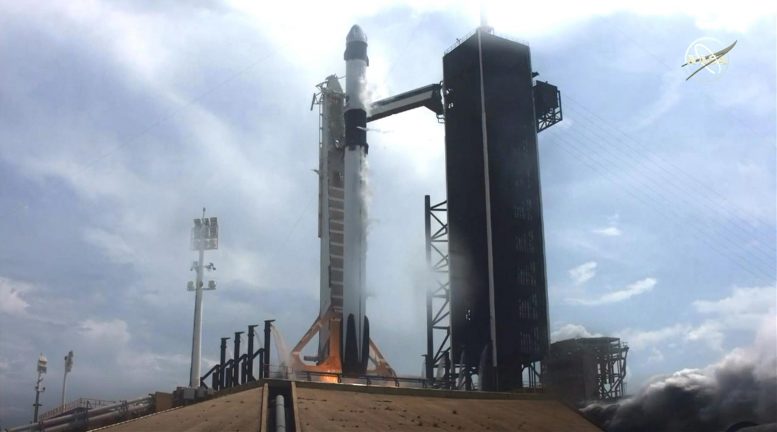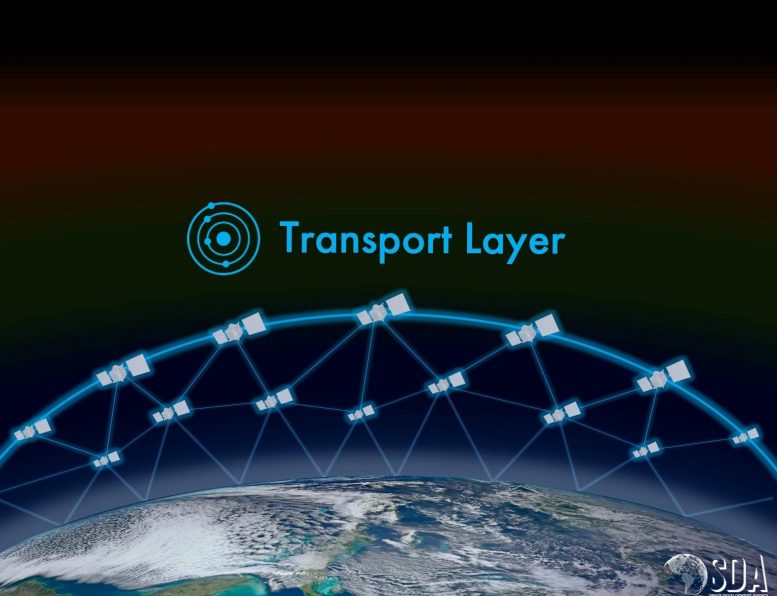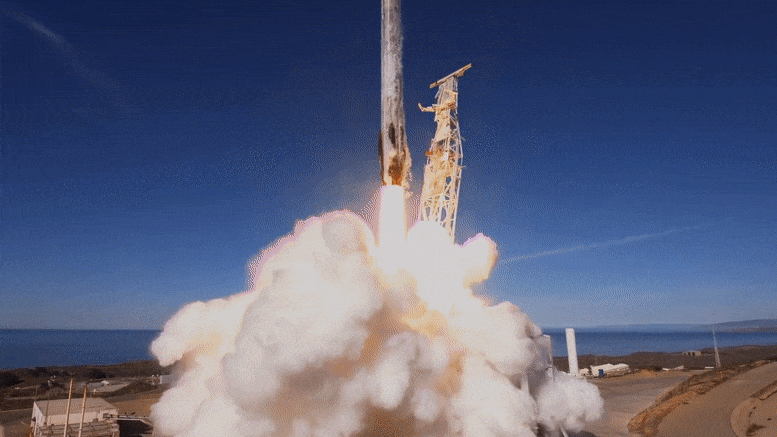The Space Development Agency — charged with building the National Defense Space Architecture — will, for the first time, put satellites into orbit aboard SpaceX’s Transporter 2 commercial rocket when it launches Friday from Cape Canaveral Space Force Station in Florida.
The Falcon 9 mission will include five SDA satellites. These include a pair of “Mandrake II” satellites; two “Laser Interconnect Networking Communications System,” or LINCS, satellites; and a satellite carrying the SDA’s Prototype On-orbit Experimental Testbed, or POET, experiment.
The SDA is working now on delivering the National Defense Space Architecture, which includes hundreds of satellites delivered in “tranches” every two years; each tranche will provide more capability.
The NDSA’s network of hundreds of satellites will provide beyond line-of-sight targeting for ground and maritime time-sensitive targets and the same for enemy missiles already in flight. The system will provide the ability to detect those targets, track them, calculate a fire control solution and then deliver that solution down to a weapons platform so the target can be destroyed.
It’s expected that the NDSA’s hundreds of satellites will communicate with one another using a network of lasers through optical communication terminals, or OCTs. For this initial mission, Mandrake II will carry an OCT from SA Photonics while LINCS will carry an OCT from General Atomics.
Two of each type of satellite will go into orbit, and the SDA will evaluate the ability of each OCT to operate in space.
“We’re trying to figure out the acquisition, the pointing and the tracking,” said a senior SDA official. “Can we make the connection; can we hold that connection; and can we exchange data between two terminals in space with that connection?”
The official said the tests will put the satellites as far as 2,400 kilometers apart in order to test their ability to communicate via laser with an OCT.

The SpaceX Crew Dragon spacecraft sits atop a Falcon 9 rocket and prepares to lift off from Launch Complex 39A at Kennedy Space Force Center in Florida, as part of NASA’s Demo-2 mission, May 30, 2020. A similar SpaceX rocket will launch on June 25, 2021, carrying satellites into space for the Space Development Agency.
“We’re going to try to send data essentially from D.C. to Denver at the speed of light,” he said. “And that’s what we’re going to bring to the warfighter over the next several years.”
SDA’s priority with the NDSA is staying on schedule and delivering capability to the warfighter as quickly as possible.
“The key thing is always to focus on getting these capabilities up and operational as rapidly as possible,” said SDA Director Derek M. Tournear during an online discussion last month with the Space Force Association. “We will trade performance for schedule to make sure that we can maintain that.
“No matter how good or how affordable a program or platform is, if it is not there when you need it, it’s worthless … we’re always focused on schedule,” Tournear said. “We’re going to get these capabilities up on time.”
As part of that focus on schedule — and cost — the SDA is hoping to build a “market” for the satellites it plans to put into orbit. It will buy a lot of those satellites and put them up regularly. Agency officials expect that a market for satellites would cause many vendors to compete regularly with their latest technology, and many would have compatible technologies.

The “transport layer” of the National Defense Space Architecture is made up of hundreds of satellites that are connected optically. The Space Development Agency is set to test that technology with satellites being launched aboard a commercial SpaceX rocket on June 25, 2021. Credit: Graphic courtesy Space Development Agency
“SDA does not believe in the concept of incumbents,” the SDA official said. “SDA believes in building markets. We believe in building industrial capacity to do the kinds of things that we need to do. As we proliferate across [low-Earth orbit], we know beyond a shadow of a doubt that we can’t depend on a single vendor for a key technology. So, we want to make sure that multiple vendors have the capability of building the systems that we need and that the warfighter needs.”
The POET experiment will also go into space on June 25. While Mandrake II and LINCS will evaluate optical communication terminals, POET will be an experiment on how to process information in space so that time isn’t wasted sending it down to Earth to be processed.
The SDA official said POET is a “battle management capability” that will be in space.
“We’re going to actually load data and algorithms into that on orbit, and we’re going to test out data fusion in orbit for the warfighter,” the official said.
Having processing capacity on the ground means unnecessary latency in the process, which is unacceptable.
“The more processing that we can move into space, the better off we’re going to be,” he said. “POET is going to give us the first opportunity to actually do that, … so we’re really looking forward to getting some data out of this.”











Be the first to comment on "Space Defense Agency Launching Satellites Into Orbit Aboard SpaceX’s Transporter 2 Commercial Rocket"